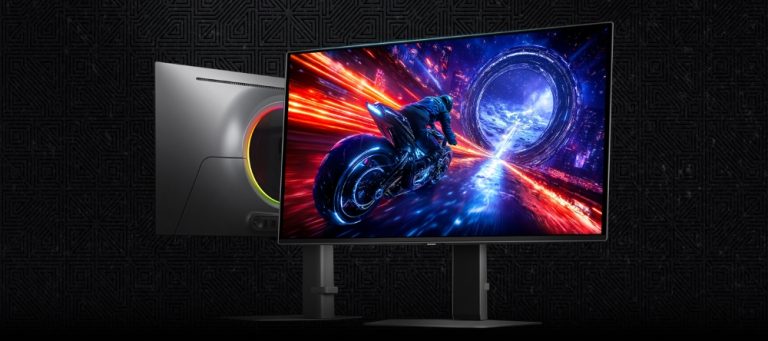
When selecting a processor, two primary players dominate the market: Intel and AMD. Both brands offer powerful CPUs across various computing needs, but they differ in architecture, performance, and price. In this article, we’ll compare Intel vs AMD processors, analyze features, advantages, disadvantages, and which processor might be the best choice for your needs.
Table of contents
- Understanding the Microprocessor: The Heart of a Computer
- Intel Processors: Leading Innovations in High-Performance Computing
- AMD Processors: Performance, Affordability, and Multi-Core Excellence
- Side-by-Side Comparison of Intel vs AMD
- Intel i5 vs. AMD Ryzen 5: Choosing a Mid-Range Processor
- Intel i7 vs. AMD Ryzen 7: Performance for Gamers and Professional
- Conclusion: Intel vs. AMD – Which Processor Should You Choose?
Understanding the Microprocessor: The Heart of a Computer
A microprocessor, or CPU (Central Processing Unit), is the brain of a computer, handling instructions and data. It performs important operations such as arithmetic and logic processing, contributing directly to a computer’s overall speed, efficiency, and performance. Key components like the Arithmetic Logic Unit (ALU), Control Unit (CU), registers, cache, and cores determine a CPU’s capabilities. Let’s explore how Intel and AMD approach microprocessor design.
Intel Processors: Leading Innovations in High-Performance Computing
Intel is one of the largest and most established names in computing, known for developing x86-based CPUs and offering a wide range of products designed for desktops, laptops, and servers. Some of Intel’s product lines include the Core, Xeon, and newer GPUs that can compete with AMD and NVIDIA.
Key Intel Products and Technologies
- Core Processors: Intel’s flagship product is the Core lineup, which includes the Core i3, i5, i7, and i9 processors. Each generation brings improve performance, with the latest Core i9 offering up to 12 cores for efficient multitasking and power demanding applications.
- Xeon Processors: Designed for professional workstations and servers, the Xeon series is available in several types—Xeon D, E, W, and Scalable each serving different applications, from data centers to high end workstations.
- GPUs: Intel has usually produced integrated graphics solutions but has recently entered the discrete GPU market with its Xe architecture, aiming to provide high quality graphics for gaming and content creation.
Notable Features of Intel Processors
- Hyper-Threading Technology: Allows each core to handle two threads, increasing multitasking and performance.
- Turbo Boost: Dynamically increases the processor’s clock speed, improving performance during demanding tasks.
- Integrated Graphics: Many Intel CPUs come with integrated graphics, ideal for general tasks and light weight gaming.
- Energy Efficiency: Intel processors are often optimized for energy efficiency, particularly beneficial for laptops with limited battery life.
Pros and Cons of Intel Processors
Advantages:
- High Single-Core Performance: Excellent for applications that don’t scale well across multiple cores, like many gaming titles.
- Diverse Product Range: From budget-friendly Celeron and Pentium CPUs to high-end Core i9 and Xeon models.
- Advanced Security: Intel includes hardware-level security features, like SGX, TXT, and CET, to guard against cyber threats.
Disadvantages:
- Higher Cost: Intel CPUs are typically more expensive than AMD’s, making AMD an attractive option for budget-conscious buyers.
- Lower Multi-Core Performance: While great for single-core tasks, Intel often lags in multi-threaded performance compared to AMD.
- Limited Upgrade Compatibility: Intel frequently changes socket designs, meaning upgrading often requires a new motherboard.
AMD Processors: Performance, Affordability, and Multi-Core Excellence
AMD, short for Advanced Micro Devices, has gained traction over recent years by delivering CPUs and GPUs. By this AMD have tough competition vs Intel and NVIDIA. With products like the Ryzen, EPYC, and Radeon series, AMD provides compelling options for gaming, productivity, and enterprise applications.
Key AMD Products and Technologies
- Ryzen Series: AMD’s Ryzen processors are popular among gamers and professionals alike. The Ryzen lineup includes the Ryzen 3, 5, 7, and 9, with high core counts and excellent multi-threading performance.
- EPYC Processors: Designed for servers and high-performance computing, EPYC CPUs offer up to 64 cores, far exceeding the core count of Intel’s Xeon line in comparable configurations.
- Radeon GPUs: AMD’s Radeon graphics cards are widely used for gaming and professional applications, directly competing with Intel’s and NVIDIA’s graphics offerings.
Notable Features of AMD Processors
- Zen Architecture: AMD’s Zen architecture has revolutionized the market, offering versions like Zen, Zen+, Zen 2, Zen 3, and Zen 4, each bringing improvements in instructions per clock, energy efficiency, and performance.
- Simultaneous Multithreading (SMT): Similar to Intel’s Hyper-Threading, SMT allows each core to handle two threads simultaneously, maximizing CPU efficiency.
- Precision Boost: Automatically adjusts clock speed for optimal performance based on system workload and thermal conditions.
- Extended Frequency Range (XFR): Boosts the CPU frequency beyond standard levels under ideal cooling, providing additional performance when necessary.
Pros and Cons of AMD Processors
Advantages:
- Affordable Multi-Core Performance: AMD is often praised for offering high core and thread counts at competitive prices, making it a go-to choice for multitasking.
- Socket Compatibility: AMD maintains socket compatibility across several CPU generations, making upgrades simpler and more cost-effective.
- Overclocking Flexibility: Most AMD processors are unlocked, allowing users to boost performance through overclocking.
Disadvantages:
- Lower Single-Core Performance: AMD’s multi-core advantage doesn’t always translate to single-threaded applications.
- Higher Heat Output: AMD CPUs can generate more heat than Intel’s, often requiring more robust cooling solutions.
- Software Optimization: Some applications and games are optimized for Intel, which can slightly impact AMD’s performance in certain scenarios.
Side-by-Side Comparison of Intel vs AMD
| Feature | Intel Processor | AMD Processor |
|---|---|---|
| Architecture | Modern x86 Microarchitecture | Zen Architecture |
| Core Count | Up to 24 cores | Up to 64 cores |
| Threading | Hyper-Threading | Simultaneous Multithreading |
| Integrated Graphics | Intel UHD, Iris Xe | Radeon RX Graphics |
| PCIe Support | PCIe 4.0, 5.0 in newer models | PCIe 4.0, 5.0 in Zen 4 |
| Memory Support | DDR4, DDR5 (Alder Lake) | DDR4, DDR5 (Zen 4) |
| Security Features | Intel SGX, TXT, CET | AMD SEV, SME |
| Socket Compatibility | New socket per generation | Longer socket support |
| Overclocking | Limited on non-K models | Unlocked on most models |
Intel i5 vs. AMD Ryzen 5: Choosing a Mid-Range Processor
The Intel i5 and AMD Ryzen 5 series are two of the most popular mid-range CPU options.
AMD Ryzen 5
Ryzen 5 is built on AMD’s Zen architecture, offering 4-6 cores and 12 threads, with a base clock of 3.6 GHz and a boost clock of up to 4.2 GHz. AMD Ryzen 5 is ideal for multitasking and content creation due to its high core count and thread availability.
Pros:
- High multi-core performance
- PCIe 4.0 support for enhanced speed
- AM4 socket compatibility for easy upgrades
Cons:
- Gaming performance may lag in some titles
- Limited availability due to high demand
Intel i5
The Intel i5 series features modern architecture, typically with 10 cores and 16 threads, and a base frequency of 1.80 GHz. Known for excellent single-thread performance, Intel i5 is favored for gaming and general applications.
Pros:
- Better single-core performance, ideal for gaming
- Dual-channel memory support
- Strong performance in programming and development tasks
Cons:
- Limited upgrade options due to frequent socket changes
- Slower adoption of new technology
Related links you may find interesting
Intel i7 vs. AMD Ryzen 7: Performance for Gamers and Professional
For high-performance needs, both Intel i7 and AMD Ryzen 7 offer solid options.
AMD Ryzen 7
With 8 cores and 16 threads, Ryzen 7 performs well in both gaming and professional workloads, offering great value.
Pros:
- Multitasking capabilities
- Battery-efficient options available for mobile devices
Cons:
- Higher prices in newer models
- Limited overclocking
Intel i7
Intel i7 processors are popular for gaming and multimedia, offering 4 cores and 8 threads with a strong focus on single-threaded performance.
Pros:
- Faster speeds for games and media
- Reliable for editing and development tasks
Cons:
- Higher power consumption
- Expensive compared to other mid-range options
Conclusion: Intel vs. AMD – Which Processor Should You Choose?
Choosing between Intel and AMD ultimately depends on your specific needs and budget. If you prioritize single-core performance and gaming, Intel’s processors, especially the Core i5 and i7, may be more appealing. However, if you’re looking for high multi-threaded performance at a competitive price, AMD’s Ryzen 5 and 7 series deliver excellent value.
In the end, both brands offer quality processors that cater to different needs, making it essential to consider your applications, budget, and upgrade path before making a final decision.





